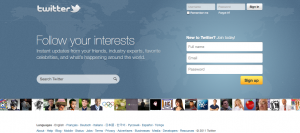 The polls had just closed for California’s June 2010 primary election, and I knew I was in for a long night. Tuesday evenings I had volunteered to work the executive producer shift at Neon Tommy, where I was in charge of promoting stories on the front page, running the Twitter and Facebook accounts and producing content. This particular evening I had to provide updated election results.
The polls had just closed for California’s June 2010 primary election, and I knew I was in for a long night. Tuesday evenings I had volunteered to work the executive producer shift at Neon Tommy, where I was in charge of promoting stories on the front page, running the Twitter and Facebook accounts and producing content. This particular evening I had to provide updated election results.
At the time, I didn’t have television. So, I had to rely on the Internet. I spent the night glued to TweetDeck, software useful for managing multiple Twitter accounts, waiting for @CASOSVote to tweet the results. As soon as I saw a tweet, I excitedly updated Neon Tommy’s story. @CASOSVote is the Twitter account for the California Secretary of State so I knew the information would be accurate.
Twitter gave me virtually real-time updates. Once the California Secretary of State knew whether a ballot measure was losing, I knew. This was amazing!
Since then, I have also used Twitter for information on other breaking news events, like Tunisia’s Jasmine revolution and the uprising in Egypt. I have even used Twitter to put together stories on the most interesting tweets from the November 2010 elections as well as the top tweets celebrating Egyptian President Hosni Mubarak’s resignation.
Twitter is an incredible tool for working journalists and news organizations. The key, though, is knowing whom to follow and being wary of tweets from unverifiable sources. For the primaries, the Twitter handle to follow was @CASOSVote. For Egypt, following @AlanFisher, a journalist on the ground in Cairo for Al Jazeera, was a must. While I knew there was a chance their tweets could be wrong, that chance was far less than the chance their information was correct. And in the fast-paced world of news, being first is everything.
Today, I, @jessikawalsten, follow 105 people on Twitter, and the vast majority of them have some connection to the world of journalism. If I want to find out what’s going on in the world, I turn to Twitter. Through the site, I can pick and choose what stories I want to read from publications like the BBC, the Los Angeles Times, the New York Times or Al Jazeera. If I want to share a story I wrote or something I found on the Internet, I can do that on Twitter, too.
In addition, journalists and news organizations can use Twitter (and Facebook) to crowd source, engaging followers by asking questions. My attempts at this have been very unsuccessful. (I tweeted a question last year asking if anyone had had a bad experience at California Hospital Medical Center. No one answered.) But I have known others, like @webjournalist and @acarver, to carry on long conversations with their followers. In fact, every week a Twitter chat is hosted on various topics where journalists and anyone else who wants to get involved can follow the hashtag #wjchat.
I didn’t always embrace Twitter like I do now. When Annenberg first forced me to sign up for Twitter in August 2009, I was skeptical and avoided it as much as possible. I still sometimes hesitate to turn to Twitter. But when I am on the clock for Neon Tommy, I know it’s an invaluable resource. And once I graduate and work full time, I know Twitter will become even more of a staple in my journalistic diet. I will have to tweet more and spend many more nights glued to TweetDeck.